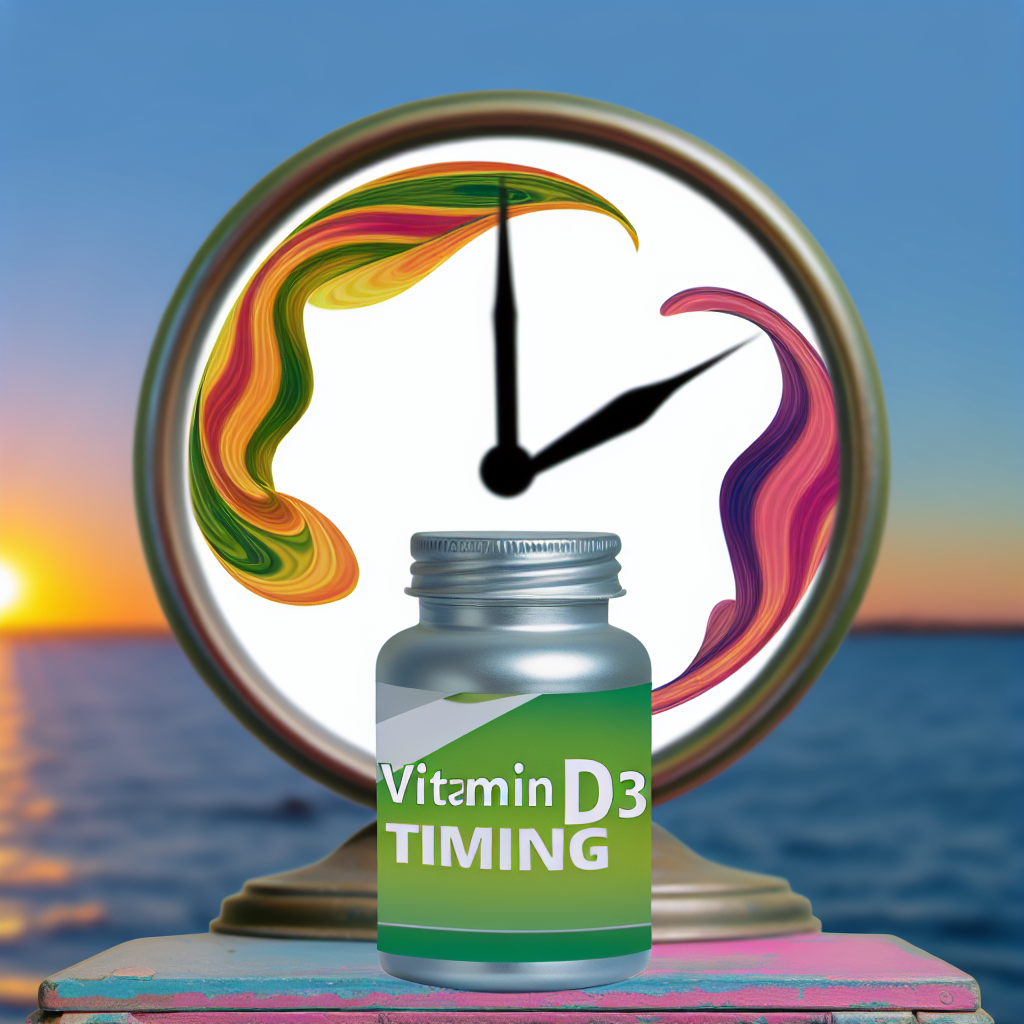Because Vitamin D is a fat-soluble vitamin, it's absorbed better when consumed with food that contains fat. Try popping your supplements with a spoonful of peanut butter, for example.
It's best to stick to a consistent time of day so you don't forget to take your supplement, says Ehsani. She also suggests aiming for the morning because it aligns with our natural circadian rhythm.
Intake Timing
When sunlight hits the skin, it provides ultraviolet B (UVB) energy that triggers a series of steps that produce vitamin D. This is the nutrient best known for bone health because it helps the body absorb calcium from food and maintain normal blood levels of phosphorus, another important bone-building mineral. Without this "sunshine vitamin," the body cannot make enough calcification to prevent osteoporosis and fractures.
A review of randomized clinical trials found that 20 mcg (800 IU)/day vitamin D and 500 mg/day calcium supplementation offered protection against fractures in people age 50 to 74 years, regardless of whether their baseline serum 25(OH)D levels were sufficient or deficient [80].
Because the body can only absorb so much of any nutrient at one time, it is best to take vitamin D with a meal that contains fat to boost absorption. Taking it in the morning limits interactions with melatonin at bedtime and may help you sleep better because it won't interfere with your body's natural rhythms. You also want to avoid taking vitamin D with medications that can interfere with its absorption, including bile acid sequestrants such as cholestyramine and colestipol, or with antacids containing aluminum hydroxide. Ask your pharmacist or doctor for help finding a dosing schedule that works with your medication regimen.
Health Benefits
Optimal intakes of vitamin D may reduce the risk of bone disease and cancer. Vitamin D can also help maintain healthy blood pressure, cholesterol and triglyceride levels. [5]
However, research linking vitamin D and other health outcomes is less consistent than for calcium. When the Food and Nutrition Board (FNB) established Dietary Reference Intakes for vitamin D, it found that evidence was insufficient or contradictory to show any relationship to health outcomes beyond those related to bone health.
Fatty fish, such as salmon, tuna and mackerel, are good sources of vitamin D. Egg yolks and beef liver also contain small amounts. Vitamin D supplements are also available. Taking too much vitamin D can cause dangerously high calcium and vitamin D levels, which can lead to nausea/vomiting, constipation, increased thirst and urination, loss of appetite, mental/mood changes and a feeling of being unwell.
Those at highest risk of deficiency should take a daily supplement during the autumn and winter, including pregnant and breastfeeding women, and all children aged 1 to 4. It’s best taken with a meal that contains a fat source to boost absorption, and in the morning to limit interactions with melatonin in the brain that can affect sleep. Some research suggests that taking Vitamin D with a meal lowers cancer risk, but further study is needed.
